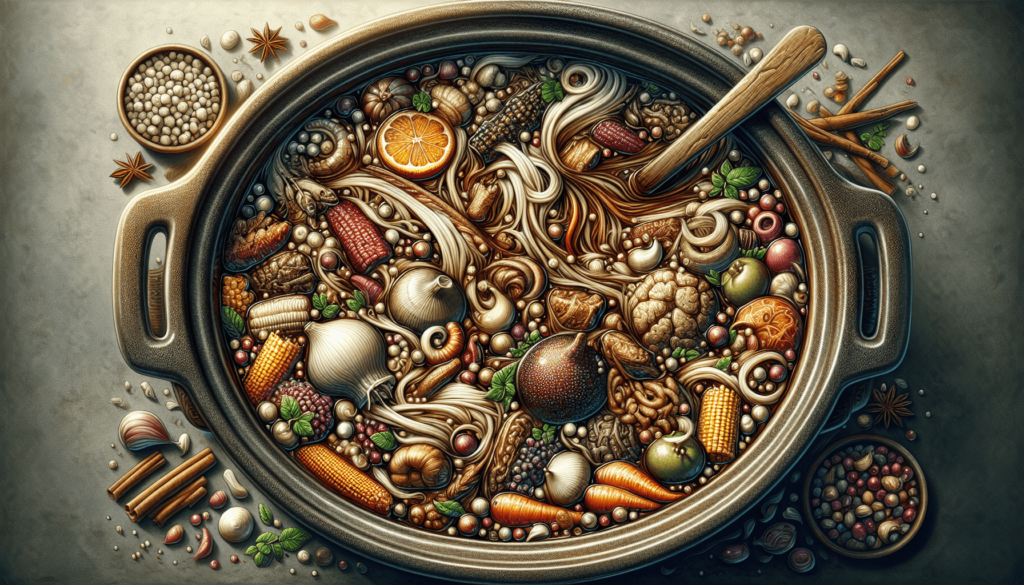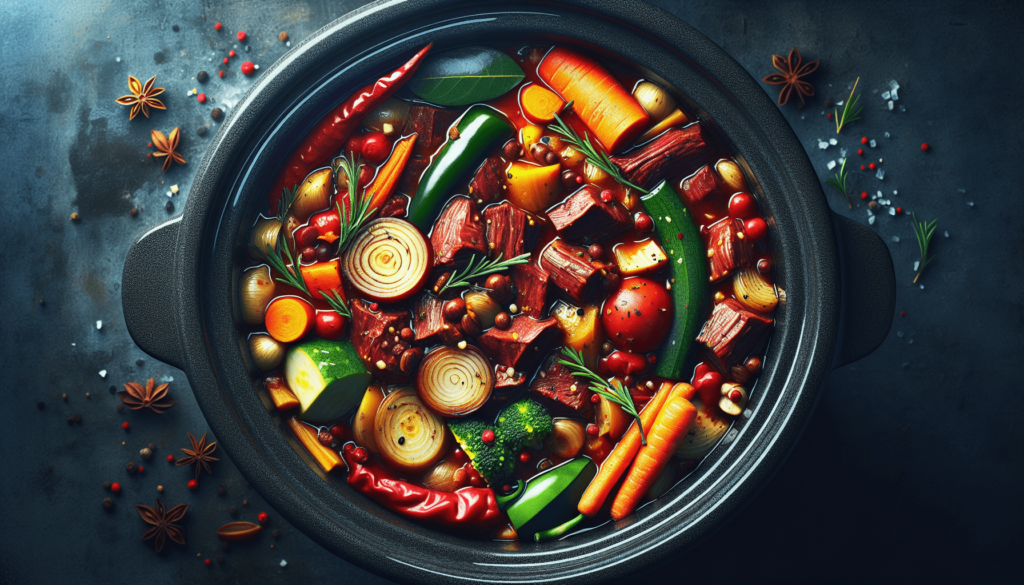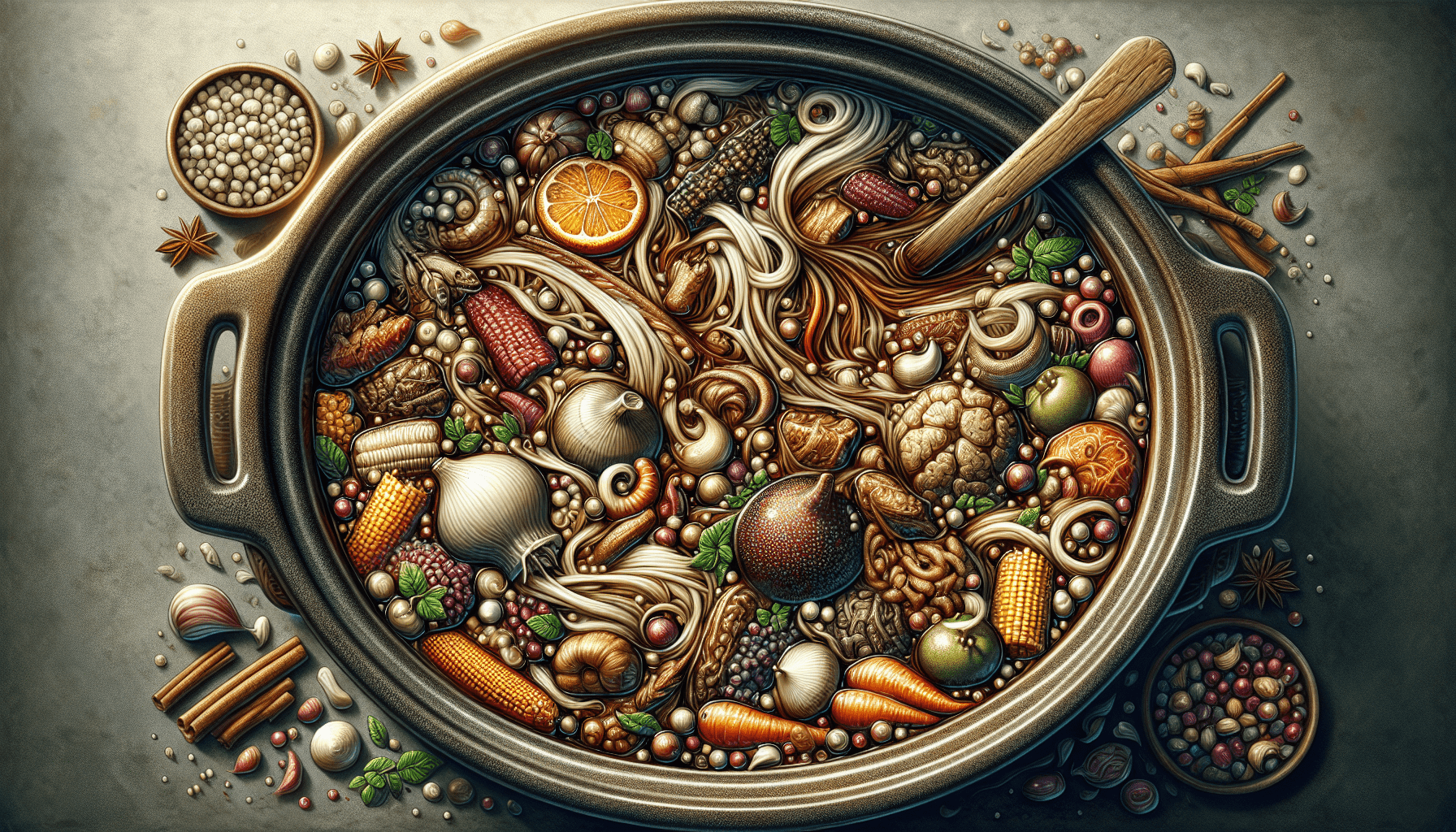Have you ever wondered why they call it a crockpot? You’re not alone! This intriguing kitchen appliance has been around for decades, but the origin of its name remains a mystery to many. In this article, we will uncover the fascinating history behind the term “crockpot” and unveil why it has become the go-to name for slow cooking enthusiasts around the world. Get ready to discover the surprising story behind this beloved kitchen staple and satisfy your curiosity once and for all.

The Origin of the Term ‘Crockpot’
Early Invention of Slow Cookers
The concept of slow cooking can be traced back to ancient times, where food was prepared over low heat for extended periods. However, the invention of modern slow cookers can be attributed to Irving Naxon, an American inventor. In the 1930s, Naxon created a device called the “Naxon Beanery” which was inspired by his childhood memories of his mother cooking in a pot nestled in a bed of hay. This early invention consisted of a pot enclosed in an outer casing, allowing for low and consistent heat to cook food slowly.
Introduction of the Crock-Pot Brand
In the 1970s, the slow cooker as we know it today gained popularity with the introduction of the Crock-Pot brand. The Rival Company acquired Naxon’s patent and released the first Crock-Pot slow cooker in 1971. The name “Crock-Pot” was chosen to highlight the convenience of preparing meals that could be left to cook slowly throughout the day, much like a traditional slow-cooked meal.
Naming the Appliance
The term “Crock-Pot” has now become synonymous with slow cookers in general, but it originally referred specifically to the brand. The name itself combines “crock,” which is an earthenware pot traditionally used for slow cooking, with the innovative “pot” that made slow cooking effortless. This clever combination of words captured the essence of the appliance and helped establish it as an essential kitchen tool in households all over the world.
The Evolution of Slow Cooking
Historical Context of Slow Cooking
Slow cooking has long been a part of culinary traditions across various cultures. From the pot-au-feu in France to the adobo in the Philippines, slow-cooked meals have been cherished for their ability to bring out flavors and tenderize tough cuts of meat. The slow cooking process allows for the gradual breakdown of fibers, resulting in succulent and well-infused dishes.
Advantages of Slow Cooking
One of the key advantages of slow cooking is its ability to retain moisture in the food, resulting in tender and flavorful meals. The low cooking temperature also helps preserve the nutrients in ingredients, making slow-cooked dishes both delicious and nutritious. Additionally, slow cookers offer the convenience of preparing a meal in the morning and returning home to a hot, fully cooked dinner.
Popularity and Convenience
Slow cookers gained widespread popularity in the mid-20th century when more households had two working parents. The convenience of being able to prepare a meal in the morning and have it ready by dinnertime revolutionized the way families approached mealtime. Slow cookers also became a popular choice for busy individuals who wanted to enjoy home-cooked meals without spending hours in the kitchen.
Understanding the Functionality
How a Crockpot Works
A crockpot or slow cooker works on the principle of simmering food at a low temperature for an extended period. It consists of three main components – the heating element, the stoneware insert, and the lid. The heating element, usually located at the base of the appliance, provides a constant and even heat source. The stoneware insert retains and evenly distributes heat, allowing for slow and consistent cooking. The lid helps seal in moisture and flavors, creating a self-basting environment.
Key Components of a Crockpot
Crockpots typically have multiple heat settings to cater to different recipes and cooking times. The low heat setting is ideal for all-day cooking, while the high heat setting allows for quicker preparation. Some modern models even feature a programmable timer, enabling precise cooking control. The stoneware insert is usually removable, making it easy to clean and serve meals directly from the pot.
Recipes and Cooking Techniques
Slow cookers are incredibly versatile and can be used to prepare a wide range of dishes. From soups and stews to roasts and desserts, the slow cooking process lends itself well to various culinary creations. Braising, stewing, and simmering are common techniques used in slow cooking to achieve tender meats and rich flavors. There are countless recipes available specifically designed for slow cookers, providing endless possibilities for home cooks.
The Influence of Traditional Cooking Methods
Traditional Cooking Methods
Before the advent of slow cookers, traditional cooking methods such as braising and stewing were relied upon to achieve tender and flavorful meals. Braising involves searing meat at a high temperature and then simmering it slowly in a flavorful liquid. Stewing, on the other hand, involves cooking ingredients for an extended period in a liquid, often resulting in a thick and hearty dish.
Adaptation of Slow Cooking
Slow cooking techniques draw inspiration from these traditional methods, utilizing the same principles of low and slow heating to achieve exceptional results. The main difference is that slow cookers provide a controlled and consistent environment, eliminating the need for frequent monitoring and adjustments. This adaptation of traditional cooking methods brings convenience and reliability to slow cooking enthusiasts.
Similar Appliances and Techniques
While slow cookers have their unique features, other appliances and techniques can achieve similar results. Dutch ovens, for instance, closely resemble the concept of slow cooking by utilizing low and steady heat. Sous vide cooking, a popular culinary technique, also involves cooking food for long periods at precise temperatures to achieve desired results. These alternative methods offer additional options for those who do not have access to a slow cooker.

Cultural Significance of Crockpots
Crockpots in American Cuisine
Crockpots have become an integral part of American cuisine, especially in regions that value comfort foods and hearty meals. From slow-cooked chili and pulled pork to cheesy dips and sweet cobblers, American households have embraced the versatility of the crockpot. Since the 1970s, slow cookers have been present at family gatherings, potlucks, and tailgate parties, cementing their status as a cultural icon.
Crockpots in Other Culinary Traditions
Slow cooking techniques are not limited to American cuisine alone. Many other culinary traditions incorporate similar methods to create traditional dishes. In Latin America, for example, slow-cooked stews like Mexican birria or Peruvian adobo are beloved culinary staples. In Asian cuisines, slow simmering is used to create rich broths for soups and braised meat dishes such as Chinese red-cooked pork.
Use of Crockpots in Different Events
Crockpots have become a dependable companion for various social gatherings and events. Whether it’s a potluck dinner, a holiday feast, or a casual get-together, the convenience of slow cooking allows hosts to focus on other preparations. Crockpots are often used to keep dishes warm during buffet-style meals, ensuring that guests can enjoy hot and savory food throughout the event.
Benefits and Drawbacks of Using a Crockpot
Advantages of Using a Crockpot
There are numerous advantages to using a crockpot in your cooking routine. Firstly, it saves time by allowing you to prepare meals in advance and let them cook while you attend to other responsibilities. The slow cooking method also ensures that flavors infuse and develop, resulting in deliciously tender dishes. Additionally, the low and consistent heat of a crockpot makes it an energy-efficient appliance, using less electricity than traditional oven cooking.
Potential Drawbacks of Using a Crockpot
While crockpots offer many benefits, there are also some potential drawbacks to consider. One common concern is the lack of browning or crispy textures that can be achieved through traditional cooking methods. Some ingredients, like delicate vegetables or seafood, may not be well suited for slow cooking due to prolonged exposure to heat. Additionally, the long cooking times may require planning ahead, which may not always be practical for last-minute meals.
Tips for Maximizing Crockpot Cooking
To make the most of your crockpot cooking experience, there are a few tips and tricks to keep in mind. Firstly, it’s important to layer ingredients properly, with meat at the bottom and delicate ingredients on top to ensure even cooking. Preparing ingredients in advance and sautéing them before adding to the crockpot can enhance flavors. It is also recommended to avoid excessive stirring to maintain the integrity of the ingredients. Lastly, experimenting with different spices, herbs, and seasonings can elevate the taste of your slow-cooked meals.
Crockpot Recipes and Inspiration
Popular Crockpot Recipes
The internet and cookbooks are teeming with a plethora of crockpot recipes to suit various tastes and dietary preferences. Some classic crockpot recipes include beef stew, pulled pork, chicken noodle soup, and pot roast. Vegetarian and vegan options such as lentil curry, vegetable chili, and creamy potato soup are also widely available. These recipes provide a foundation for experimentation and allow individuals to adapt flavors and ingredients to their preferences.
Creative Uses of Crockpots
Crockpots can be used for more than just traditional soups and stews. They can also be utilized to make dips, yogurt, mulled drinks, and even desserts like bread pudding or chocolate lava cake. The gentle and prolonged heat of a crockpot can give rise to unexpected culinary delights that are sure to impress friends and family.
Online Resources and Communities
For those seeking further inspiration and guidance, there is a wealth of online resources and communities dedicated to crockpot cooking. Websites, blogs, and social media platforms offer recipes, tips, and tricks shared by experienced slow cooking enthusiasts. Joining these communities can help individuals connect with fellow crockpot users, exchange ideas, and explore new culinary possibilities.
Innovation and Modernization of Crockpots
Technological Advancements
Just as with other kitchen appliances, crockpots have undergone significant technological advancements over the years. Programmable timers, digital displays, and automatic temperature adjustments are some of the features that modern crockpots boast. These technological advancements provide users with greater flexibility and control over their cooking, ensuring precise results with minimal effort.
Features of Modern Crockpots
Modern crockpots often come in various sizes to accommodate different serving needs. Some have divided stoneware inserts, allowing for the preparation of multiple dishes simultaneously. Removable stoneware inserts with non-stick coating make cleaning a breeze. Some models even offer Wi-Fi connectivity, enabling remote control and monitoring through smartphone apps.
Integration with Smart Homes
With the rise of smart home technology, crockpots have also embraced connectivity features. Integration with voice assistants and smart home systems allows users to control their crockpot using simple voice commands or through smartphone apps. This level of integration adds convenience and flexibility to the cooking experience, making it easier than ever to prepare slow-cooked meals.
The Crockpot as a Kitchen Essential
Versatility and Flexibility
The crockpot’s versatility and flexibility make it an indispensable tool in the modern kitchen. It can accommodate a wide range of recipes and ingredients, allowing individuals to explore different flavors and cooking techniques. From comforting soups to succulent roasts, the crockpot offers the freedom to experiment and adapt recipes to suit personal preferences.
Time and Energy Saving
One of the most significant benefits of using a crockpot is the time and energy it saves. By allowing for unattended cooking, individuals can focus on other tasks or spend quality time with their loved ones. Additionally, slow cooking is an energy-efficient way of preparing meals, consuming significantly less electricity compared to conventional oven cooking.
Lifestyle Convenience
The crockpot caters to the demands of a busy and modern lifestyle. Whether you work long hours, have a hectic schedule, or simply prefer hands-off cooking, a crockpot can be a lifesaver. It provides a hassle-free way of preparing delicious meals without compromising on taste and quality.
The Future of Crockpots
Trends and Predictions
As cooking trends continue to evolve, crockpots are expected to adapt and incorporate new features. The demand for healthier eating options may lead to the development of crockpots with enhanced steaming capabilities or precise temperature control for sous vide cooking. Multi-functional crockpots that combine slow cooking with other cooking methods such as searing or air frying may also become more popular.
Sustainable and Eco-Friendly Innovations
In an era of increased focus on sustainability, the future of crockpots may include eco-friendly designs and features. Manufacturers may prioritize energy-efficient models that contribute to reducing carbon footprints. The use of eco-friendly materials and recyclable packaging may also become more prevalent.
Continued Relevance in the Culinary World
Despite the emergence of new cooking technologies, the crockpot’s enduring popularity suggests that it will continue to be a relevant and beloved appliance in the culinary world. Its timeless appeal, convenience, and ability to create wholesome and comforting meals ensure that it will remain a staple in kitchens for years to come.
In conclusion, the term “Crock-Pot” originated from the innovative combination of a traditional crock and a modern pot, capturing the essence of what slow cooking appliances aim to achieve. Slow cookers have evolved over time, drawing inspiration from traditional cooking methods and incorporating modern features to enhance convenience and control. The cultural significance of crockpots extends beyond American cuisine, with various culinary traditions embracing the slow cooking technique. While crockpots offer numerous benefits, including time and energy savings, it’s important to consider potential drawbacks and make the most of the appliance by utilizing tips and recipes. The future of crockpots may bring further innovation and sustainable designs, but their continued relevance in the culinary world is undeniable. Whether it’s for everyday meals or special occasions, the crockpot remains an essential kitchen tool that brings comfort, convenience, and delicious meals to countless households.
